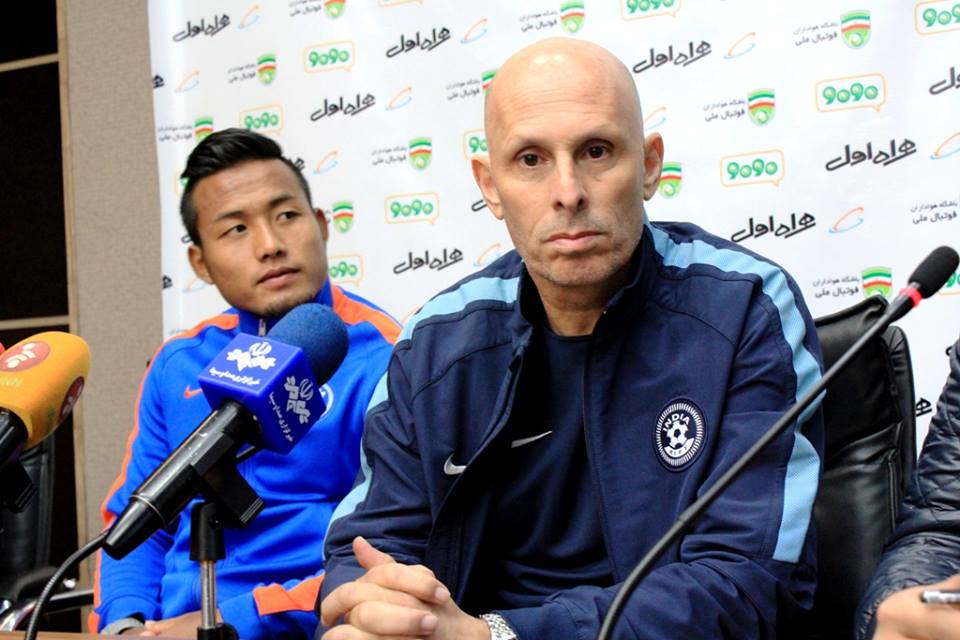From where we started – Where India stand after Stephen Constantine’s second coming

When Stephen Constantine was appointed as the head coach of the Indian national football team in early February 2015, the British coach had marked his realistic targets - to make a good fist of the 2018 World Cup campaign and aim for qualification to the 2019 Asian Cup. That, along with the SAFF Cup triumph, would have been a perfect backdrop for Constantine’s plans in the coming future.
The Indian national team did
The draw for the 2019 AFC Asian Cup qualifiers playoff round will be held on April 7, and it is more or less slated to decide the future of Stephen Constantine, wherein India can face Yemen in a worst case scenario.
With results not going in Constantine’s favour and fans increasingly voicing their anger, two matches – home and away – in the AFC Asian Cup Qualifiers playoff round can very well turn out to be Constantine’s last.
Although Constantine has stressed on the development of youth and expanding the pool of players, it still remains uncertain whether his second coming will reap as
With 23 players debuting in his tenure thus far, one can perhaps argue that Constantine is trying to test young Indian talents in the national team, or perhaps, one can argue that the British coach is still far away from his best starting XI, let alone his best squad of 23. For any national team coach the time to manoeuvre his starting XI is scarce. Hence the need to identify the best starting XI not only safeguards the team from any further
Hence, there was little surprise when Cavin Lobo and Jeje failed to strike a chord in India’s penultimate World Cup qualifying match, and the Indian attack force failed to register a single shot on target in the second half of that match. This is not the first time that echoes of lack of coordination have been observed in the Indian squad. In the matches against Guam (away), Iran (home) and Turkmenistan (away), India failed to find their footing and regularly struggled to keep hold of possession in their half, with the midfield close to non-existent and the attack line, capable of only shielding the ball for a second, before being robbed of possession by a hard tackle.
Nevertheless, Constantine’s tenure might not be as vague as it seems. The only highlight of India’s World Cup qualifying campaign was the win against Guam wherein a 10-man India held on for more than 50 minutes, showcasing the best of Constantine’s leadership and arguably his era. Against Guam in Bengaluru, India played like a unit, attacked like a single unit and defended as a single unit. The chemistry was cent percent between the Indian players, and if with a man down, India can perform quite brilliantly against a team of, in Constantine’s words “American Players”, why can’t the ‘Blue Tigers’ showcase the same with 11 players against teams in the same pool as Guam? The shuffling of the first XI has to stop at some time before the damage is too much to sustain, and players who are
As for the SAFF Championship, Constantine impressed with his game plan against Maldives and Afghanistan, matching both the teams blow for blow and edging them to victory. The squad performed surprisingly well, and an 18-year old Lallianzuala made his debut.
Apart from taking home the regional championship, the SAFF Cup, Constantine has nothing to flaunt as his laurels in his second coming. Although the British coach has impressed in games against Oman, Guam and Afghanistan, with a display of attacking intent, rather than defending deep like the teams under Wim Koevermans, Constantine has still a lot to ponder over what his next step might be. An influx of young players seems to be the backdrop for days to come, which is good on the experience parameter, but the coach must promptly decide his best starting XI, work on them, construct them into a single unit to render the foundation of a well-oiled Indian team, rather than